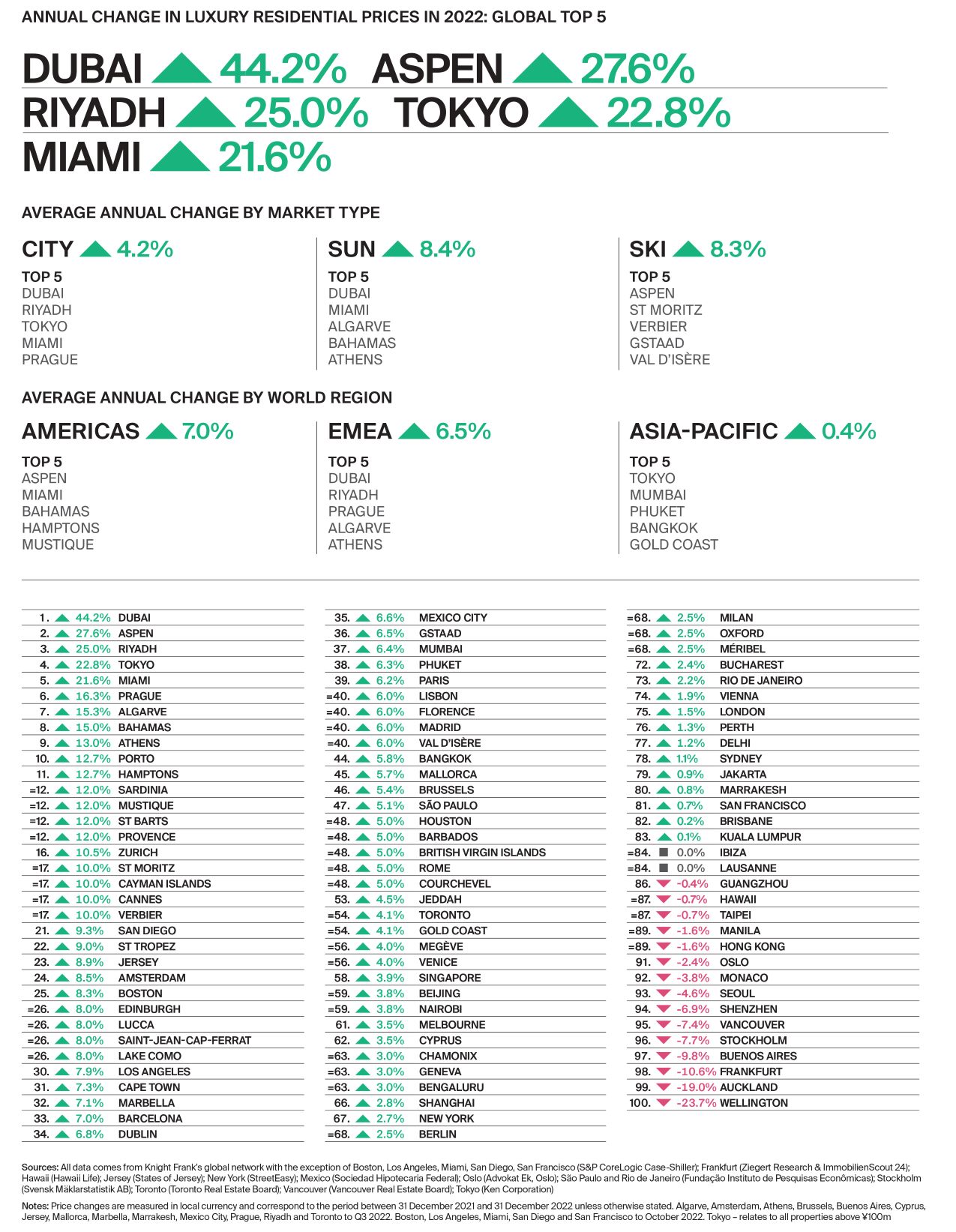Prime international real estate prices ranked 2022
Where’s hot, where’s not and what’s influencing prime real estate prices around the globe?
2 minutes to read
We take the pulse of our unique Prime International Residential Index (PIRI 100), which tracks price performance across 100 key city, sun and ski locations.
Of the 100 prime markets tracked in our Prime International Residential Index, 85 recorded positive or flat price growth in 2022.
Dubai tops table
Dubai leads for the second year running, cementing its status as a second home hub for global UHNWIs (ultra-high-net-worth-individuals), assisted by numerous visa initiatives.
Resorts outperformed
Coastal and rural locations in sunnier climes saw average price growth of 8.4%, marginally ahead of ski resorts which were up 8.3% on average, eclipsing their 2021 record.
Americas leads the way
The Americas (7%) narrowly pipped Europe, the Middle East and Africa (6.5%) to the title of top performing region, with Asia-Pacific trailing on 0.4%.
Key highlights
• The post-pandemic spending still has momentum.
• Hybrid working is behind the outperformance of sun and ski resorts.
• Regulations are increasing with foreign buyers and prime markets key targets.
• The slowdown is most evident in Asia-Pacific and city markets.
• Prime prices declined in only 15 of 100 prime markets tracked.
• Dubai leads the 2022 annual rankings and our forecast for 2023.
(Click image below to download and explore in detail)

Prime prices in context
Last year we referred to 2021 as “an anomaly”; a year characterised by stellar price growth as markets reopened post-Covid, and revenge spending took hold.
Off the back of such a boom, you might be forgiven for thinking 2022 would see a return to business as usual. Far from it. Omit 2021, and 2022 posted the highest level of prime price growth on an annual basis (5.2%) since the global financial crisis (download the PDF to see more on page 37.)
Sentiment shifted gear in mid-2022 as inflation waved goodbye to its transitory status and the cost of debt ramped up, recession loomed, the Ukraine conflict led to rocketing energy prices and stock markets, not to mention crypto, went wobbly.
Why prices grew
So what was behind the price growth? Wealth preservation, safe haven capital flight and supply constraints played their part, but the pandemic-induced surge clearly had more left in the tank.
Covid-19 underlined the fragility of life and the need for connectivity, and sparked a mass transition to hybrid working. For the world’s wealthy, this increased their appetite to buy, with 17% telling us they added to their portfolios in 2022.
Discover more
Download
Download the full report for more in depth analysis and the latest trends relating to global wealth.
Download the report
Subscribe
Subscribe for all the latest insights and additional content.
Subscribe